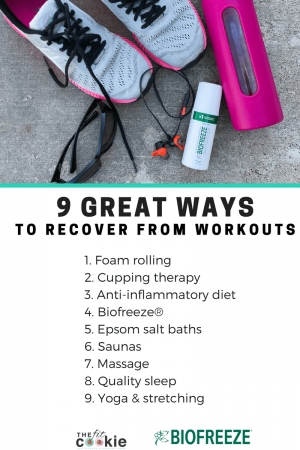These days help prevent overtraining, support hormonal balance, and reduce injury risk, while still allowing consistent progress and long-term adherence to a training routine. Here are some general guidelines depending on the different types of exercise. Remember to listen to your body – if you are feeling overly fatigued or sore after a workout, it might be a signal that you need more time to recover. Rest days are as important as your workouts in helping you reach your goals. Regularly taking a day off from structured exercise promotes recovery, improves sleep and mood, and may prevent injuries.
Don’t neglect the stretch
To recover from fatigue after exercise and feel energized again, rest must be a daily discipline, not an afterthought. Once you train within your MRV, every other recovery strategy works better because your body finally has room to recover and grow. MRV refers to the highest amount of training your body can handle while still making progress and recovering fully between sessions (Castelli, 2017).
Sleep more
That’s one of the reasons why the first half of your night is so important. I know you’ve already heard that a good night’s sleep is important. But there is a good reason why I consider sleep the number one muscle recovery factor. Anaerobic exercises such as weight lifting, High Intensity Interval Training (HIIT) and CrossFit have a catabolic effect on muscle tissue. In other words, those types of exercises cause muscle tissue to get damaged, tear and break down. Exposing your muscles to cold temperatures after exercise can help recovery.

Devices like WHOOP, Fitbit, or Apple Watch can monitor your sleep, heart rate variability (HRV), and recovery metrics. Creatine monohydrate is a popular sports supplement that has been shown to improve athletic performance and recovery. Researchers found that compression garments can improve athletic performance after intense exercise and recommend that athletes wear compression tights immediately after a workout to reap the benefits. Dehydration can lead to many problems, including muscle fatigue, soreness, and cramps. Therefore, after a workout, it is important to replenish these glycogen stores as quickly as possible. It helps your muscles recover, and you can return to exercising well again.
- {
- If it was a tough or sweaty run, don’t just reach for water—grab something with electrolytes.
- I’ve seen guys hit the gym daily, with no breaks, and plateau hard because their muscles never got the memo to grow.
- If possible, focus the water jet on the muscles you have just been training.
- Walking lunges, arm circles and hip CARS (controlled articular rotations) are all examples of dynamic stretches that encourage joints to move through their full range of motion.
- If you’re doing full-body workouts and have sore muscles all over, compression socks or sleeves alone aren’t enough for your overall muscle recovery.
- In one study, participants took 40 grams of casein protein 30 minutes before sleep after resistance training.
|}
{
|}
{
|}
Beyond physical recovery, rest days contribute to mental rejuvenation, preventing burnout and helping you stay committed to your exercise routine in the long run. For most recreational lifters, taking rest days ensures that each workout is productive and sustainable over months and years. Cold-water immersion (CWI) may provide benefits, too, with ice baths or cryotherapy helping limit muscle soreness from the DOMS. Although recent studies have suggested that CWI can limit muscular growth and adaptations caused by particular exercises.
What should I eat after a workout for recovery?
Better to cut a run short or take a rest day than to train half-asleep all week. “The evidence for foam rolling is weak to directly prevent soreness, but the downside [to doing it] is pretty minimal,” she says. But if you wake up the next morning feeling like you can’t get out of bed, that’s too sore, she says.

Here’s a quick breakdown of what techniques are slightly overrated, majority overhyped, or even counterintuitive to your goals. That “one step forward, two steps back” pattern is familiar to experts. The core elements of recovery start with rest and adhering to consistent tactics, according to Anthony Katz, the founder of Hyperice, which is pioneering high-end recovery devices designed for elite athletes. Below are frequently asked questions relating to muscle recovery. Even world-class athletes are strategic about which times or years they train at peak intensity.
Whey, soy, and casein protein powders are popular complete protein choices. Research consistently shows it can help improve muscular strength when combined with resistance training. The foods people eat can profoundly affect athletic performance and recovery. Living an overall healthy lifestyle is the most important step you can take to maximize your recovery from working out. No recovery method can compensate for poor nutrition and a lack of rest.
So getting extra Zzz’s after a tough workout might do more than you know to speed your body’s recovery. Non-fitness-related stressors — such as poor sleep, relationship troubles, and working overtime — can affect how much rest and what type of recovery a person may need from a given workout, too. Repeated again and again, this process of stress and recovery is what results in improved health and fitness. If you’re local to Dearborn, https://megagrass.com/community/question-and-answer/forums/4133-general-questions/topics/2805151-mad-muscles-for-fat-loss-anyone-tried-it check out services offered by Dearborn Racquet & Health Club, including massage therapy and recovery lounge options. Whether you need deep tissue work or guided stretching, these resources can make a big difference.
{
The Complete Guide To Muscle Recovery That’ll Help You Bounce Back Faster
|}
But others, such as the ones mentioned below, you might not have even heard of. The fact is that if you maintain a diet that’s sufficiently high in protein, and if you consume enough protein throughout the day, you don’t need a protein shake immediately after a workout. In other words, the more time you spend in those restorative phases of sleep, the better and quicker your body can recover. Giving your body the right tools to enter an anabolic state and begin its repair process is incredibly important. The tips below are in order of their importance, so make sure you follow that order and don’t skip to the part that’s most convenient for you. However, rhabdo is an extreme case that affects only about 26,000 people each year in the United States.
These activities eliminate waste, carry nutrients to your muscles, and reduce soreness. Just remember to keep these exercises gentle to avoid hurting your muscles. Muscle recovery is not simply a rest period; it’s an active biological process where the body repairs and strengthens itself. Of course, easier/challenging is completely individual—what’s intense for one person might be run-of-the-mill for another. Importantly, you should start training again within a few days of feeling recovered so that you keep the body adapting and growing, says Machowsky.
{ |}
|}
Ice baths, frozen peas, gel packs—whatever your flavor, cold therapy has been a go-to for athletes forever. When you’re passed out drooling on your pillow, your body’s putting in serious work—rebuilding muscle, fixing the wear and tear, and locking in everything you did during your run. Your muscles burned through a ton of glycogen (stored carbs) during your run. It can be tempting to push the limits of your flexibility, but stretching should never feel painful, Cockrell says. Yoga, and especially slow-paced disciplines like yin yoga, are great for recovery.
{ |}
|}
But if you’re serious about getting stronger, staying injury-free, and not feeling like trash the next day, there are 3 things you never skip. One 2015 study has shown that foam rolling your muscles could make a big difference in reducing soreness in subsequent days. Researchers had eight male participants do sets of heavy back squats, followed by either no foam rolling or 20 minutes of foam rolling right after, and then again a day and two days later. Those who took the time to foam roll could sprint more quickly and jump farther in follow-up tests.
Sleep deprivation can have a very negative effect on recovery. Not getting the recommended 7-9 hours of sleep will interfere with the production of the anabolic hormones testosterone and human growth hormone, both of which are crucial for recovery and muscle growth (6). Instead of training a muscle group once every seven days, train it every five days instead, or even train it twice a week. After sufficient rest, your muscles increase in strength and size, and your glycogen stores are replenished. All this means that the next time you train that same muscle group, you are better equipped for the demands of your workout.
